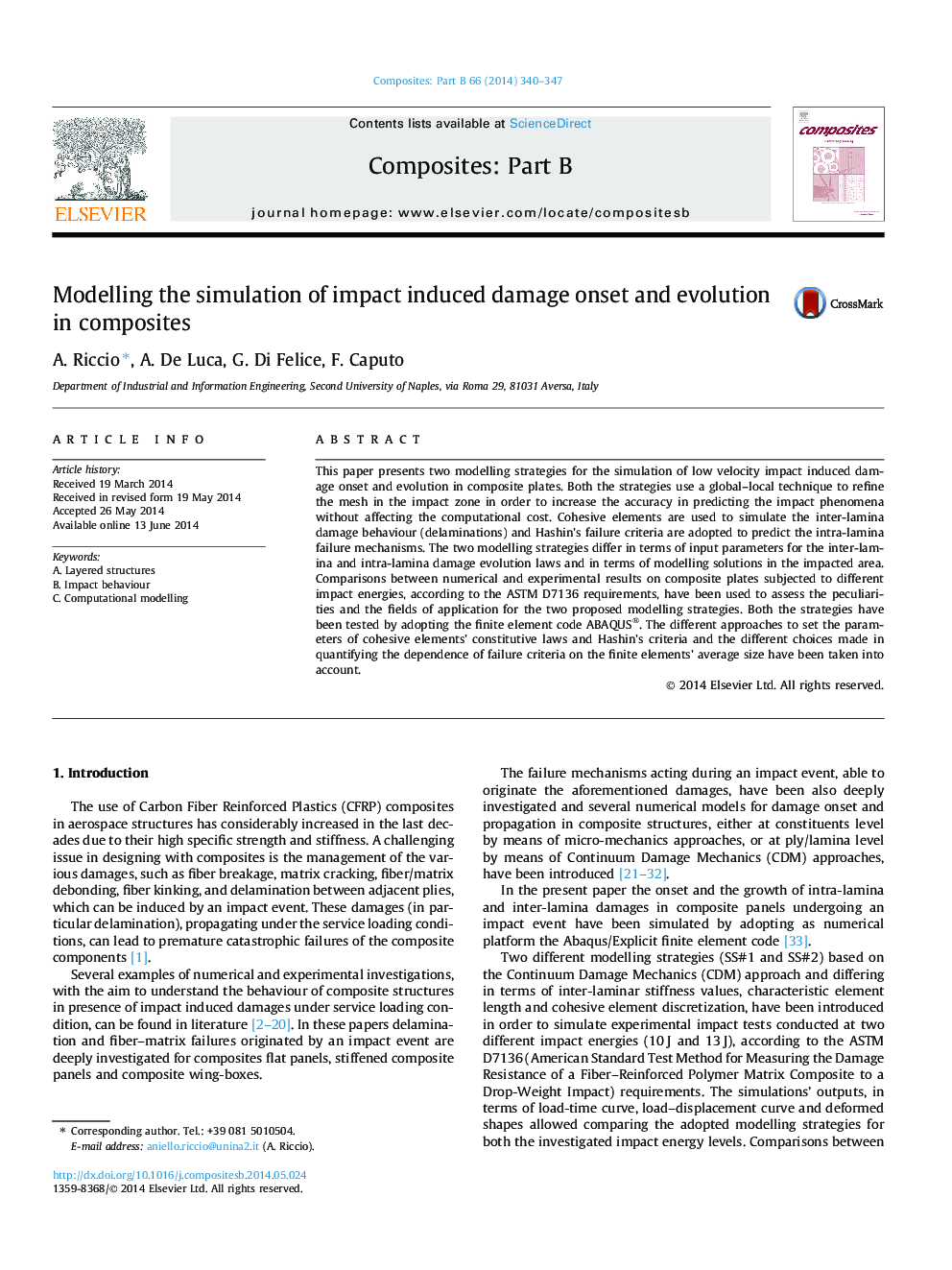| Article ID | Journal | Published Year | Pages | File Type |
|---|---|---|---|---|
| 7213563 | Composites Part B: Engineering | 2014 | 8 Pages |
Abstract
This paper presents two modelling strategies for the simulation of low velocity impact induced damage onset and evolution in composite plates. Both the strategies use a global-local technique to refine the mesh in the impact zone in order to increase the accuracy in predicting the impact phenomena without affecting the computational cost. Cohesive elements are used to simulate the inter-lamina damage behaviour (delaminations) and Hashin's failure criteria are adopted to predict the intra-lamina failure mechanisms. The two modelling strategies differ in terms of input parameters for the inter-lamina and intra-lamina damage evolution laws and in terms of modelling solutions in the impacted area. Comparisons between numerical and experimental results on composite plates subjected to different impact energies, according to the ASTM D7136 requirements, have been used to assess the peculiarities and the fields of application for the two proposed modelling strategies. Both the strategies have been tested by adopting the finite element code ABAQUS®. The different approaches to set the parameters of cohesive elements' constitutive laws and Hashin's criteria and the different choices made in quantifying the dependence of failure criteria on the finite elements' average size have been taken into account.
Related Topics
Physical Sciences and Engineering
Engineering
Engineering (General)
Authors
A. Riccio, A. De Luca, G. Di Felice, F. Caputo,
